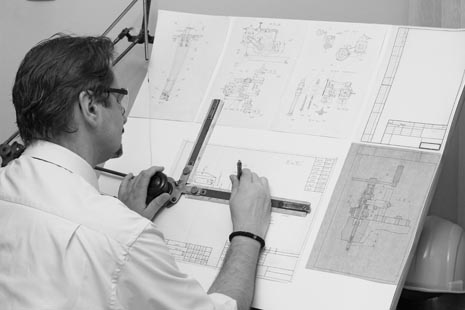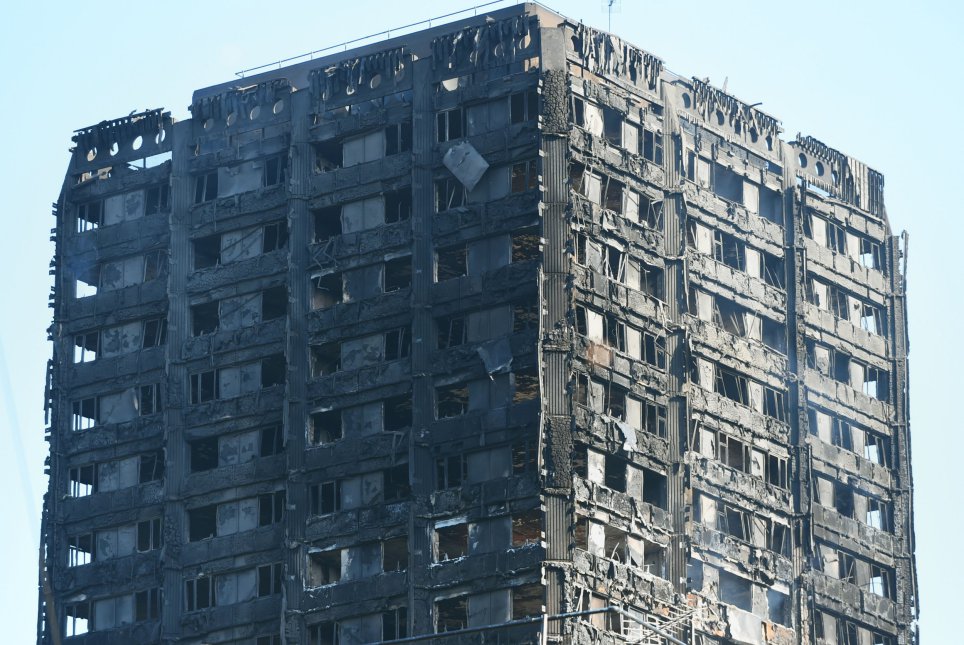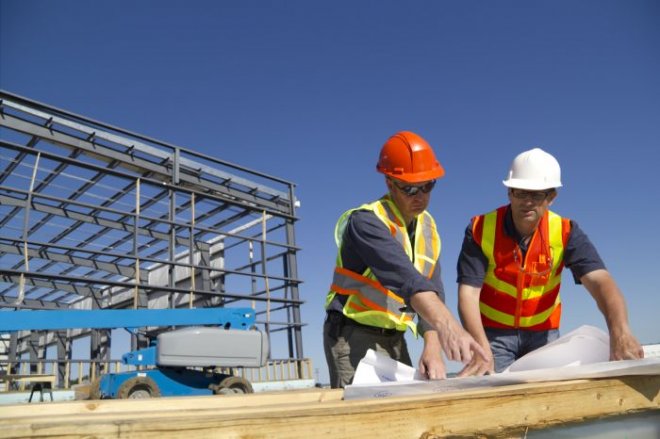Main author
Michael BrooksInterview with Gary Mees, CIAT
In November 2017, Gary Mees completed his two year term as President of the Chartered Institute of Architectural Technologists (CIAT).
Designing Buildings Wiki spoke to Gary about his time as President, smart buildings, CIAT's Grenfell recommendations, the skills shortage, and about what he plans to do next...
| Designing Buildings Wiki (DBW): Your term as President of CIAT has just come to end [November 2017]. What will you take from the two years and is there anything in particular from your term that you are most proud of? |
Gary Mees (GM):
Mostly what I’ve been trying to do within the institute is focus on our strategy and corporate plan, to get the internal mechanisms running so that we’re all in the same position and know the direction we’re going in. That was part-and-parcel of what I talked about when I was President-Elect – to try and get ourselves more focused as a business.
My ethos has primarily been that we as practitioners are not just accepting of what comes out of legislation, but that we get involved in the process of it and help develop and hopefully direct some of it with some reasonable direction, and we are doing that at the moment by being heavily involved with CIC relating to the Grenfell tower fire..
Overall though, one of the delights of being a President is travelling around some great examples of architectural technology presenting plaques to people.
| DBW: Do you think awareness and appreciation of the work of architectural technologists is increasing, is there more work to be done in this area? |
GM:
There’s always more that could be done, that’s why we’re so interested in working with Designing Building Wiki.
We’re always trying to get the term ‘architectural technologist’, especially with ‘chartered’ attached, out there in public consciousness, so there is the recognition that they can expect to receive a professional service. Unfortunately, too many people still don't understand the difference between architectural technologists and architects!
| DBW: What excites you most about the development of smart buildings and how are CIAT engaging with this, and other new trends? |
GM:
I’m in my 44th year in the industry so I’m certainly at the tail-end of my career, but I love my technology and with everything that’s coming through – virtual reality, BIM, Cloud data, etc. – I must admit I wish I were starting out again.
I keep saying to younger practices that they need to be engaging with and understanding the processes of BIM because if you don’t or haven’t started the process, they will have a steep learning curve and may get left behind. Clients are increasingly demanding these tools so we have to be able to use them to perform efficiently and meet expectations.
| DBW: Is there the concern that new technologies are developing at such a rapid pace that the built environment will be unable to keep up? Considering there are still basic things, such as closing the performance gap, that the industry struggles with. |
GM:
Having come from working with T-squares, razorblades and that sort of thing, my career has been one of constantly updating technology. I’m an external examiner at Robert Gordon University and I always say to students that if they speak to someone who says “it’s the way I’ve always done it”, they should stop listening to them.
You cannot survive just by doing things the way you’ve always done it, you have to explore new technologies that are effecting buildings because clients want to know what’s new or how they can most efficiently achieve certain performances. What we try to ensure is that people think of fabric first principles before adding the ‘carbon bling’.
| DBW: In October 2017, CIAT submitted its response to the government’s independent review of Buildings Regulations and Fire Safety following Grenfell. If there was one key recommendation that you’d like to see them take on board, what would that be? |
GM:
As I see it, Grenfell is quite a complex scenario. We still don’t know the primary causes of what went on.
We’re also involved in the Cole Report, looking at the Edinburgh schools defects. As a designer you come up with decisions based on certain parameters and when that moves on, depending on the type of contract it is, the reasoning behind the decisions made get lost and forgotten about. And all of a sudden, a contractor makes another decision for whatever reason. So continuity of design is lost too easily.
If you were to pull back the design team to say "we want to change this", what would the implications be? Of course, that backward step costs money, and everyone is very value-conscious, we are an industry driven in one direction by clients who say "well, the project won’t go ahead". I suspect in the future, whatever comes out of Grenfell, we may end up with a situation where there’ll be big projects that won’t go ahead because people will say "we can’t afford to do it that way, you’ll have to do it that way".
I don’t think there is one nugget that could solve the problem. There’s a whole raft of questions which sadly will take perhaps even 5-10 years to all be answered. I know the public and government want answers quickly, but they are not easily arrived at other than being quite prescriptive about what we do in the future. We have tried as an industry to move away from that prescriptivism and focus on performance, but maybe that’s no longer working.
| DBW: Do you think the construction sector is well-poised to deal with Brexit? What concerns you the most? What would you like to see from the government moving forwards? |
GM:
We have a government that doesn’t seem to know what to do about it. We have to try and position ourselves, as a young institute we pride ourselves on being able to move quickly, and I think that’s what the industry will have to do in order to survive whatever comes out of Brexit.
Certainly, it’s going to be challenging times with however it gets parcelled up. Whatever our point of view on Remain or Leave, it is what it is, and government are having to proceed as best they can. Who knows really?!
| DBW: Are you frustrated by the continual problems in terms of the skills shortage and what more could be done to promote careers in architectural technology? |
GM:
The problem is that people are coming out of university and are faced with firms who always want experience. I know that as an industry there are so many small firms – less than 10 people. But if we keep turning young people away because they have no experience, we’re not going to have anybody in a few years time.
Smaller, younger practices have got to take on people who aren’t going to perhaps be as useful as they’d like initially, but certainly they can help nurture that talent as they see fit. Obviously we still have to look at the schools and colleges – how are they presenting the careers to them. We need to get into the schools to explain to them what an architectural technologist is.
| DBW: What’s next for you once you've stepped down as CIAT President? |
GM:
I’ve also been appointed as chair of a working group for the Building Standards Division of the Scottish Government for about 2 and a half years, working with the committee reviewing standards. So I feel like a bit of a glutton for punishment, but I probably won’t rest on my laurels yet!
In November 2017, CIAT inaugurated Alex Naraian as their new President. For more information, see this article.
[edit] Find out more
[edit] Related articles on Designing Buildings Wiki
Featured articles and news
One of the most impressive Victorian architects. Book review.
RTPI leader to become new CIOB Chief Executive Officer
Dr Victoria Hills MRTPI, FICE to take over after Caroline Gumble’s departure.
Social and affordable housing, a long term plan for delivery
The “Delivering a Decade of Renewal for Social and Affordable Housing” strategy sets out future path.
A change to adoptive architecture
Effects of global weather warming on architectural detailing, material choice and human interaction.
The proposed publicly owned and backed subsidiary of Homes England, to facilitate new homes.
How big is the problem and what can we do to mitigate the effects?
Overheating guidance and tools for building designers
A number of cool guides to help with the heat.
The UK's Modern Industrial Strategy: A 10 year plan
Previous consultation criticism, current key elements and general support with some persisting reservations.
Building Safety Regulator reforms
New roles, new staff and a new fast track service pave the way for a single construction regulator.
Architectural Technologist CPDs and Communications
CIAT CPD… and how you can do it!
Cooling centres and cool spaces
Managing extreme heat in cities by directing the public to places for heat stress relief and water sources.
Winter gardens: A brief history and warm variations
Extending the season with glass in different forms and terms.
Restoring Great Yarmouth's Winter Gardens
Transforming one of the least sustainable constructions imaginable.
Construction Skills Mission Board launch sector drive
Newly formed government and industry collaboration set strategy for recruiting an additional 100,000 construction workers a year.
New Architects Code comes into effect in September 2025
ARB Architects Code of Conduct and Practice available with ongoing consultation regarding guidance.
Welsh Skills Body (Medr) launches ambitious plan
The new skills body brings together funding and regulation of tertiary education and research for the devolved nation.
Paul Gandy FCIOB announced as next CIOB President
Former Tilbury Douglas CEO takes helm.





























